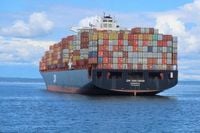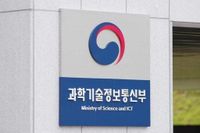South Korea’s export landscape is going through a dramatic transformation in 2025, with technology, content, and policy at the forefront of a complex story. As the Ministry of SMEs and Startups convened a pivotal roundtable on September 24, 2025, the nation’s export engines—ranging from semiconductors to K-culture and ICT services—are facing both promising opportunities and daunting obstacles.
According to the Ministry of SMEs and Startups, the roundtable gathered a diverse roster of stakeholders: export corporations rooted in K-culture across beauty, fashion, food, and lifestyle; global platform giants like Amazon, Shopee Korea, and Olive Young; and key logistics companies. The agenda? To tackle the pressing challenges and brainstorm policy alternatives to boost online exports for small and medium-sized enterprises (SMEs).
Participants voiced concerns about the rising burden of logistics costs and the looming impact of changes to the United States’ de minimis system, which has historically exempted packages valued at $800 or less from tariffs. With the system’s abolition on the horizon, many Korean exporters fear the loss of a vital cost advantage in the lucrative U.S. market. As one participant put it, “Easing the burden of logistics costs and preparing countermeasures following the abolition of the United States’ de minimis system are urgent tasks.”
Minister Han Seong-suk of the Ministry of SMEs and Startups underscored the importance of digital channels, stating, “The online market does not have high entry barriers or risks, so it is a very useful means of entering overseas markets for small and medium-sized corporations seeking new markets or customers.” She pledged that the ministry would “prepare and implement comprehensive support measures on multiple fronts so that our small and medium-sized corporations can expand the K economic territory through online channels.” The ministry is expected to unveil a detailed plan for boosting online exports by SMEs in the near future, reflecting the diverse opinions aired at the roundtable.
Yet, this optimism is tempered by turbulence in the global shipping sector. The Japan International Freight Forwarders Association (JIFFA) reported that Busan’s container export market continued its slide in the week leading up to September 24, with the KOBC Container Composite Index (KCCI) dropping 6.79% to 1,785 points—its second consecutive week of decline. Most trade lanes showed weakness: rates to the U.S. West Coast plummeted 12.06% to $2,019 per forty-foot equivalent unit (FEU), while the U.S. East Coast and Europe fell 7.04% and 10.07%, respectively. Even the Mediterranean route slipped 10.44% to $2,427 per FEU. Some bright spots remained, such as Australia and Southern Africa, where rates ticked up slightly, but the overall picture was one of mounting pressure on exporters.
Meanwhile, the Korea Trade-Investment Promotion Agency (KOTRA) brought a note of hope, announcing on September 24 that South Korean companies were set to ink export deals worth a combined $30 million during a two-day Korea-APEC Business Partnership event in Gyeongju. The event, drawing some 500 companies from Korea and abroad, focused on a wide array of exports—consumer goods, AI-powered road safety information services, educational communication devices, and heavy machinery components. KOTRA highlighted that the gathering also provided a unique platform for Korean firms to explore collaboration in trade, supply chains, and infrastructure with foreign partners. The agency is planning further events, such as Export Boom-up Korea and the Invest Korea Summit, to coincide with the upcoming APEC summit in Gyeongju from October 31 to November 1.
South Korea’s strengths in technology and content are especially apparent in the information and communication technology (ICT) sector. The Ministry of Science and ICT revealed that ICT service exports soared 19.3% in the first half of 2025, reaching $6.37 billion (about 8.88 trillion won). This surge is attributed to the boom in artificial intelligence, cloud services, and the global popularity of K-content—particularly games. Game software alone accounted for 44% of total ICT exports, amounting to $2.84 billion. Other significant contributors included information services ($930 million), packaged software ($840 million), IT services ($770 million), and digital content ($630 million).
Intellectual property (IP) usage fees, mainly royalties from distributing and servicing domestic games abroad, accounted for $3.88 billion—61% of total ICT exports. The bulk of these exports headed to Asia (55%), with North America and Europe accounting for 28% and 15%, respectively. Large and mid-sized companies were responsible for 70% of total exports. Imports in the sector also rose by 12.3% to $4.8 billion, but the country still posted a healthy trade surplus of $1.57 billion. Park Tae-wan, director general of information and communication industry policy at the Ministry of Science and ICT, remarked, “We will do our utmost to support global expansion so that the benefits of ICT service exports extend to small and medium-sized enterprises and individual businesses, and to strengthen the institutional foundation to respond to changes in the digital trade environment.”
Yet, beneath these headline numbers lie structural concerns. Data from the Ministry of Science and ICT, as reported by The Korea Times, confirmed that game content’s share of ICT exports stood at 44%, with information services at 15% and packaged software at 13%. While the sector’s growth is impressive, it is heavily concentrated, raising questions about the resilience of Korea’s export engine if global tastes or technology trends shift.
Perhaps most telling is the story of South Korea’s semiconductor industry. According to the Korea Customs Service, semiconductor exports from January to August 2025 totaled $104.294 billion—a 15.7% jump from the same period in 2024. Semiconductors now account for a staggering 23.0% of Korea’s total exports, up from 15.9% in 2023 and 21.0% in 2024. Overall, cumulative exports for the first eight months of the year reached $453.827 billion, a modest 0.87% increase from the previous year. But if semiconductors are excluded, exports actually fell 2.8% year-on-year to $349.533 billion. Monthly trends reinforce the concern: while overall exports rose 5.8% in July and 1.2% in August, non-semiconductor exports dropped 0.3% in July and 5.5% in August, with sectors like chemicals, auto parts, machinery, and steel all suffering declines.
This heavy dependence on semiconductors has sparked debate among analysts and policymakers. Some argue it creates an “optical illusion” of export strength, masking deeper vulnerabilities in other sectors. As one observer noted, “If semiconductor export performance is cleared, Korea’s sluggish exports will be revealed.” The data suggests that while Korea’s high-tech prowess is undeniable, the country faces the risk of overreliance on a single sector—leaving it exposed to global market swings and technological disruptions.
In sum, South Korea’s export story in 2025 is one of remarkable growth, innovation, and global ambition—tempered by logistical challenges, sectoral imbalances, and shifting global tides. As policymakers prepare new support measures and exporters look to diversify, the nation’s ability to adapt will determine whether it can sustain its export momentum or fall prey to the pitfalls of overconcentration.





